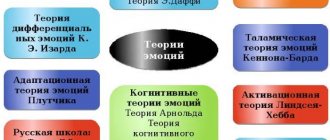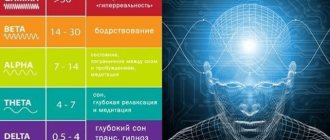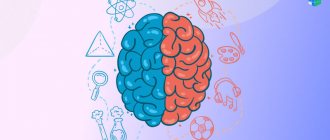At the moment, the concept refers to general methodological categories. It is currently in demand in many areas of human activity. It is also necessary to take into account the psychological state at a professional level when training representatives of many specialties. Including astronauts, athletes, law enforcement officers, specialists in the field of labor and teaching activities. It underlies the formation of universal human norms and rules of behavior. This category has been closely studied since the mid-twentieth century. The initial reason for its study was the formation of accounting in the formation of labor standards. This concept currently defines the uniqueness of the specific activity of a particular individual.
Types of psychological states
Currently, the following types of psychological states are distinguished:
- Defined by the source of formation as personal and situational.
- Separated into a separate type according to the level of severity as superficial and deep.
- They may differ in duration; in such a situation, short-term, long-term, and medium-duration are distinguished.
- Differing in degree of awareness as unconscious and conscious.
- Characterized by emotional characteristics as neutral, positive and negative.
- Sorted according to the degree of influence: depressing (asthenic), activating (sthenic), negative and positive.
- The manifestations are divided according to the level of psychological, physiological and psychophysiological.
If we simplify all these types as much as possible, then all psychological states are divided into three leading groups: positive, negative and specific.
- The list of positive ones includes love, kindness, interest in learning, happiness and other positive factors. They are characterized by an increased level of social activity, positive mood, and a high degree of performance.
- Negative ones include anger, envy, fear, anger and other manifestations of states that are completely opposed to positive types; accordingly, they lead to a decrease in the level of performance and a positive perception of life.
- The list of specific states includes wakefulness, sleep, a state of altered consciousness and similar states.
In most cases, a person is able to determine his condition independently and assess the cause of its occurrence. Violation of self-determination indicates the presence of psychological disorders. At the moment, psychological states are just beginning to be closely studied as a separate area. Many criteria have not yet been clearly identified.
Causes of emotional stress
Stress can be caused by both sudden and ongoing negative events in a person’s life. If a tragedy occurs, or, conversely, a person has been a prisoner of a difficult situation for a long time without the opportunity to rest or switch attention from the traumatic situation, a kind of “mental burnout” may occur.
At the same time, the source of serious emotional stress can be both real traumatic events and a person’s excessively negative perception of various, for most people, events that are not something serious. In this case, the risk group will be people with an easily excitable psyche, suspicious, rigid, and unable to switch.
Specific causes of emotional stress for most people:
- death or serious illness of a loved one
- disaster
- war
- job loss
- serious illness
- divorce
- change of residence
- loss of source of income
- breaking up with a loved one
Diagnosis of psychological conditions
At the moment, in specialized practice there are three main methods for the diagnostic determination of psychological states:
- Subjective-evaluative, based on the study of accompanying foundations characteristic of psychological states. Determined by the patient independently. What is taken into account is what the observed is able to describe. As a rule, specialized graphic scales are used. Including “Scale-graph of emotional state”, SAN, ACC, “Relief of psychological state”.
- The study of unconscious psychological states, carried out on the basis of data from specially developed questionnaires. The patient independently evaluates how each principle given in the questionnaire corresponds to his self-perception. For example, the “Reactive and Personal Anxiety Assessment Scale” developed by C.D. is used. Spielberg and Yu.D. Khanin.
- Study of the expressive (behavioral) component.
When conducting research, data from the Relaxation Activation Test (RAT) are taken into account. Parameters of autonomic functions are taken into account, such as heart rate, breathing rate, brain encephalogram, GSR, ECG and other studies.
Physiological studies make it possible to objectively describe immediate changes in the patient’s psycho-emotional state. Often this type of research is recognized by experts as the most reliable and revealing. The study analyzes the actions of several people placed in similar conditions.
Conducting reliable tests is recommended only after reaching adulthood. Indicators in childhood and adolescence do not differ in high indicators.
Negative and positive states
Negative states include: • suffering; • anger; • disgust; • contempt; • shame.
These are asthenic emotions that negatively affect the body, worsen well-being and reduce the supply of vital energy. There is a feeling of chills, shortness of breath, blood circulation slows down, and muscle tone decreases.
Positive emotional states are positive emotions perceived by the subject as good health and mood: joy, interest, satisfaction. They are accompanied by a beneficial expansion of small blood vessels, blood flow to organs, and an increase in motor activity.
Assessment of psychological state
Currently, mental status assessment is carried out by allowing the patient to undergo certain tests. They examine indicators of human health. It is proposed to evaluate the level of cardiac activity, the presence of pain, for example, headaches or in the stomach. The patient needs to evaluate from his own point of view the condition and color of the skin, the body’s thermoregulation.
After processing the results obtained, the doctor must conduct an individual conversation with each patient. In its course, both the direct answers given by the person undergoing the study and the personal observations of the specialist are equally taken into account. The doctor evaluates the interlocutor’s behavior, his level of self-confidence, and his readiness to make contact with a specialist.
A comparison of the results obtained allows us to give the most objective assessment. The specialist also receives data confirming or refuting violations of the psychological state and psychological health in general. Conducting research is necessary in order to gain the most complete understanding of human mental activity.
Problems of psychological states
The problems of psychological states are just beginning to be studied closely. The occurrence of disorders is often associated with external symptoms. But they can become the basis for discomfort and a feeling of psychological distress.
The occurrence of mental health problems leads to a sharp decrease in the quality of life. Patients feel general dissatisfaction. Psychological problems can become the basis for the formation of psychosomatic diseases. At the level of general dissatisfaction with life, patients often experience asymptomatic headaches or pain in the gastrointestinal tract. Insomnia often occurs. Psychosomatic conditions can manifest themselves in the form of dizziness and fainting, and lead to eating disorders. The most common violation is a decrease in the level of performance and readiness for social adaptation in the team.
Psychological states of the individual
At the moment, there are several main types of psychological states of the individual. Until the mid-twentieth century, this factor was not assessed and was not clearly defined for the formation of a psychosomatic portrait of an individual. Although these indicators are often ready to become decisive in determining many of the leading factors in the formation of a person’s comfortable daily lifestyle and his readiness to engage in various types of activities.
Moral and psychological state
It is determined on the basis of a comparison of the interaction of the surrounding reality with mental experiences generated at the level of the individual’s psyche. In such a situation, an important factor that needs to be taken into account when forming a psychological portrait is the correspondence between internal experiences and the state of the environment.
A large role is given to including the individual’s psychotype and personal characteristics into the characteristics under consideration. Often, a major role in an adequate assessment of the moral and psychological state is the willingness to take into account the natural makeup of character. A sanguine person's assessment of what is happening will always differ from the choleric person's view of a similar situation.
Psychological states of a person
The analysis examines the structural organization of all mental components of a particular person. It is determined taking into account the positions of personal and orientational attitudes. Such an analysis helps to compare the personal state with the state of the environment capable of satisfying personal needs, subjective realities in relation to specific needs. Personal attitudes and beliefs play the main role in such a situation. It is analyzed with the use of which components a person reaches the optimal level of satisfaction of needs and whether the environment around him is capable of providing the opportunity to form the necessary indicators.
Psychological state of the child
Until late adolescence, it is quite difficult to objectively assess the psychological state of a child. An incompletely formed psyche is prone to sudden changes in mood and perception of the surrounding reality.
At the same time, analyzing the psychological state of a minor becomes an adequate way to assess the psychological state of his environment. The psychological state of the child suffers and this is clearly noticeable to the specialist in the event of a breakdown in contact with adult relatives and peers. Negative tendencies can lead to significant cognitive impairment. The readiness to perceive knowledge decreases, well-being worsens, and self-esteem falls. All these indicators can negatively affect adult life.
Social psychological state
The socio-psychological state can have a significant impact on the positive or negative perception of life in general. In this situation, experts consider all the relationships into which an individual enters to varying degrees, and how confident he feels in them. Is the environment capable of generating support for an individual’s actions or does it become a provocateur for the formation of violations.
A negative socio-psychological state can become the basis for the formation of psychosomatic disorders.
Features of student’s psycho-emotional states during distance learning
HOME > Return to contentsModern education
Correct link to the article:
Sokolov G.A.
— Features of student’s psycho-emotional states during distance learning // Modern education. – 2014. – No. 1. – P. 1 - 13. DOI: 10.7256/2306-4188.2014.1.10921 URL: https://nbpublish.com/library_read_article.php?id=10921 Sokolov Georgy Aleksandrovich
graduate student, Department of Psychology, Modern Humanities Academy
107143, Russia, Moscow, st. Open Highway, 22
Sokolov Georgii Aleksandrovich
post-graduate student of the Department of Psychology at Modern University for the Humanities
109029, Russia, Moscow, Nizhegorodskaya ulitsa 32, korp.4
DOI:
10.7256/2306-4188.2014.1.10921
Date the article was sent to the editor:
15-02-2014
Publication date:
1-3-2014
Annotation:
The article describes the specifics of psycho-emotional states that arise during distance learning.
A general description of the distance learning form is given and its impact on cognitive processes is described. The psycho-emotional state of students during the learning process is described in detail. The sources of negative emotions and positive emotions in the educational environment are described. It is shown that during distance learning, students experience fewer negative emotions, especially emotions associated with experiencing exam stress. It has also been shown that almost all sources of positive emotions are preserved during distance learning. Currently, training is the main way of obtaining education; training also refers to the process of mastering skills, knowledge and abilities under the guidance of masters, teachers, mentors, etc. Forms of training are divided into traditional and distance learning, which has recently been gaining particular popularity, education [9]. Distance education is a form of education in which the learning process is fully or partially carried out with the help of computers and telecommunications technologies and means. The subject of distance education is removed from the teacher, as well as from other teaching aids and educational resources [8]. This form of education is carried out with a predominance of distance educational technologies, methods, forms and means of teaching in the educational process; information from educational arrays on the Internet is also used. Keywords:
Emotions, Psycho-emotional states, Negative emotions, Positive emotions, Learning, Distance learning, Traditional learning, Education, Creativity, Internet
Abstract:
The author of the article describes the peculiarities of psychoemotional state of students during distance learning. The author gives a general description of distance learning and explains what kind of impact it has on cognitive processes. The author in detail describes the psychoemotional state of students in the course of learning. He describes the sources of negative and positive emotions in the educational environment and shows that in case of distance learning, students do not experience so many negative emotions. In particular, they are less nervous before exams. The author also proves that distance learning manages to preserve almost all sources of positive emotions that a regular education has. At the present time learning is the main way to receiving education. Learning also means the process of acquiring knowledge and skills under the guidance of masters, teachers, mentors and etc. Learning an be traditional or distant. Noteworthy that distance learning has been growing quite popular lately. Distance learning means that the process of education is partly or fully performed by the means of computers and telecommunication technologies and means. The recipient of distance learning is far from a teacher as well as training and educational sources. This form of education is performed mostly through distant educational technologies, methods, forms and teaching resources as well as with the help of data obtained from the educational sources on the Internet.
Keywords:
emotions, psychoemotional state, negative emotions, positive emotions, learning, distance learning, traditional education, education, creativity, Internet Distance education is a form of education in which the learning process is fully or partially carried out with the help of computers and telecommunication technologies and means. The subject of distance education is removed from the teacher, as well as from other teaching aids and educational resources [8]. This form of education is carried out with a predominance of distance educational technologies, methods, forms and means of teaching in the educational process; information from educational arrays on the Internet is also used.
In addition to the Internet, an important technology, implemented, for example, at the Modern Humanitarian Academy, is the sending of educational content to students (paper and electronic textbooks, video courses of lectures and seminars, etc.) through the system “university teleport - satellite - student satellite dish - TV”. This technology is interactive; students undergo real-time knowledge testing, consult with teachers, etc.
Distance education began to develop intensively in the USA and Europe back in the early 70s. The reasons for its spread are very simple and objective: every person, regardless of his location and nationality, can receive a diploma from any university. Most education experts believe that distance education is a form that shows great promise as it can be suitable for many potential students and is less expensive. In addition, you can choose certain training courses, that is, receive “custom-made education,” which allows you to approach learning in a more differentiated manner and obtain only the necessary knowledge [9]. Distance learning is characterized by technology - that is, the use of the latest achievements of information and telecommunication technologies and social equality in the educational process; it provides equal opportunities to receive higher education regardless of the state of health, place of residence, material security, or elitism of the student. This form of education is consistent with the requirement of humanizing education, preparing students in accordance with the strategy of “cultivating goodness” [2].
The basis of the educational process during distance learning is the purposeful and controlled intensive independent work of the student, who can independently determine the sequence of mastering subjects, study in a place convenient for him, at an individual speed, and in some cases, at a time convenient for him. Therefore, the main advantage of distance learning should be considered a certain freedom in terms of location, time of study and its pace, which makes distance learning attractive for those users who, for one reason or another, do not have the opportunity to study full-time, but want to improve their educational level.
Online learning makes it possible to improve the quality of education through the widespread use of global educational resources and an increase in the share of independent mastery of the material, and the latter is especially important because it gradually ensures the development of such qualities as independence, responsibility, organization and the ability to realistically assess one’s strengths and make informed decisions, without which is unthinkable for a successful career. In addition, e-learning automatically leads to “early mastery of skills in the use of information and communication technologies, which can subsequently significantly increase the efficiency of using knowledge in the economy” [7].
But there are also some negative aspects of distance learning. Firstly, there is a need for constant access to sources of information. This requires good technical equipment, but not everyone who wants to study has a computer and Internet access. Secondly, students in this form of training feel a lack of practical training. Thirdly, there is no constant control over students, and this, unfortunately, is a powerful incentive for Russian people. Fourthly, training courses and programs are not always well developed because today there are not many qualified specialists, and not each of them can create such training aids.
Since distance learning has long been used for education both in our country and abroad, special scientific research has already been carried out to describe its specifics.
The cognitive characteristics of distance learning have been best studied. The goal of any type of training is to achieve students’ understanding of the material being studied, which is possible when a word (lecture) is associated with an image (for example, video material) [6], which are actively used in distance learning.
Research has shown that the specifics of the distance learning form impose certain requirements on the functions of planning and decision-making, and are also based on certain characteristics of attention, memory and thinking of students. In particular, it is shown that learning at an individual pace leads to the fact that the speed of learning is set by the student himself, depending on his personal circumstances and needs. Distance learning develops freedom and flexibility of thinking because the student can choose any of the many courses of study, as well as independently plan the place, time and duration of classes. Distance learning ensures mobility due to the effective implementation of feedback between the teacher and the student, which is one of the main indicators of the success of the learning process, which also develops the mental functions of students. Also, during distance learning, teachers strive to actualize the individual’s creative abilities by creating comfortable conditions for the student’s creative self-expression [7].
In addition to its impact on the cognitive sphere, distance learning also affects the psycho-emotional sphere of students. The key difference between distance education and traditional education is that it uses innovative computer technologies, which in turn cannot but influence the psycho-emotional state of students.
Psycho-emotional states are a special form of human mental states with a predominance of an emotional response of the dominant type. In other words, it is a person’s emotional response to some action, situation or human reaction.
The purpose of our article is a theoretical analysis of the specifics of the psycho-emotional states of students during a distance learning process.
The relevance of this topic is based on the fact that emotions determine the quality of life of any person, including a student [11]. People show their emotions at work, when communicating with friends, relatives and loved ones - i.e. in everything that is dear to them and about which they sincerely care.
The emotional state is considered to be the most important in relation to a person’s life. These may be experiences, affective states, or emotional outbursts.
All human emotions can be distinguished and classified according to the quality of the experience. American psychologist K. Izard identified ten qualitatively different “fundamental” emotions: interest - excitement, joy, surprise, grief - suffering, anger - rage, disgust - disgust, contempt - disdain, fear - horror, shame - shyness, guilt - repentance. He classifies the first three as positive, the remaining seven as negative.
Thus, a person may exhibit: positive, negative psycho-emotional states. All contents of a person’s emotional sphere, no matter how different they may seem, are inseparable from the personality. The personality manifests a connection with needs, motives, which reflects the state, process and result of satisfaction. In relation to the individual, all emotional manifestations arise in three main types:
- As acute emotional reactions to sudden circumstances (anger, joy, melancholy, fear).
- As emotional states with changes in neuropsychic tone (states of euphoria and depression, fear and anxiety, anger and melancholy, and other states).
- As a pronounced selectivity of emotional relationships, positive or negative, towards one or another subject (feelings of love, affection, passion, enmity, hostility, hatred and others).
In manifestation to the individual, experienced emotions can be shown in bodily experiences. In the course of comparing psycho-emotional states and human experiences in foreign and domestic psychological studies, a special influence of negative psycho-emotional states was discovered [1].
Let's start with the fact that all of the listed characteristics of distance learning affect students, their level of quality of life and psycho-emotional states.
A number of features characteristic of distance learning affect the psycho-emotional state. For example, the lack of face-to-face communication between students and the teacher means that all aspects related to an individual approach and education are excluded. This is rather a negative factor for learning, since there is no person next to the student who could emotionally color the knowledge.
Distance learning requires strict self-discipline, and its results directly depend on the student’s independence and consciousness. This requires significant self-control from the student, including the ability to control their emotional states. Most authors note the following characteristics of distance learning as emotional advantages: low emotional stress during learning, minimal stressful situations when testing knowledge, lack of pride when interacting with teachers, and the absence of a halo effect.
When studying, students may experience positive and negative psycho-emotional states. We identified the following negative psycho-emotional states in students, as in any person: fear, pain, uncertainty, jealousy, irritation, dissatisfaction, resentment. During observations of students in educational activities, we observed all these manifestations of these emotions. Negative states were reflected in emotional reactions [12].
Other authors also identify various factors that cause negative emotions in students during the learning process.
T.N. Berezina identifies three sources of negative emotions in the educational environment. “The first of them is specific to the educational environment - these are numerous fears and anxieties associated with studying, and what about fears of sanctions for poor studies; a striking example of a negative emotion of this kind will be exam anxiety. The second is the experience of failure, negative emotions caused by frustration due to the inability to achieve a goal. This source is less specific, since frustration in a teenager is not always associated with the educational process. An example of this kind of negative emotion could be worries about an unsatisfactory grade, shame for not being able to do the required number of pull-ups on the horizontal bar, for disgracing your parents, etc. The third source of negative emotions is the relationships of adolescents, their relationships with each other and with adults. Here, negative emotions are associated with the rejection of a teenager or young man, the denial of friendship or love to him” [4, p. 20]. Some of these emotional experiences are universal, for example, rejection in relationships; they arise not only among students and not only in an educational institution [10]. Others are typical specifically for the educational environment. This is exam stress, worries due to negative emotions. Many authors note the danger of such negative emotions and their impact on the health of students [5]. “In our case, exam stress and the exam anxiety we register may turn out to be genuine negative emotions, the danger of which is that they lead to the appearance of psychosomatic problems in the future. Therefore, even if excellent students can compensate for the cognitive component of their anxiety with high abilities and get the desired mark on the exam, exam stress can still lead to unpleasant consequences for their health in the future. This is especially dangerous in cases where the mark on the final exam does not coincide with the expected one, that is, positive emotions from an “A” will not be able to compensate for the effect of exam stress, the child will have a doubly genuine negative emotion, which can be dangerous in terms of causing psychosomatic reactions” [ 13, p. 125].
During distance learning, many negative emotions are outside the educational process, since live communication “teacher-student” and “student-student” is reduced to a minimum. We believe that when exams are taken in the form of online testing, students experience significantly less exam stress, and they will have less threat to their health due to possible psychosomatic problems.
But there are also positive emotions in the psycho-emotional states of students. As studies have shown, three main sources of positive emotions can be identified among students in the traditional form of education. “Most often, genuine joy is associated with the student’s scientific, artistic or social creativity (“I was engaged in self-improvement”, “I composed a song”, “I came up with a new idea”, “I listened to music”). /…/ Another source of genuine joy is associated with the student’s achievements, his successes, recognition of his results by other people (“I was offered to publish my article,” “I imagined how I received a prestigious award”). Genuine joy from an achievement can remove the negative feelings from the path to it. For example, getting an A in an exam can compensate for exam anxiety. /…/ And the third source is the social relationships of people, relationships of love, friendship, genuine joy was often found in relationship situations (“a friend called”, “a young man I was interested in approached”)” [3 p.900].
We believe that all these sources of positive emotions are preserved during distance learning. This is due to the fact that in the distance learning form the main emphasis is on activating a person’s creative abilities [8], so he will experience the whole range of positive emotions associated with creative activity. Also, with the distance form of education, the possibility of all achievements for the student is preserved, he receives positive grades, based on the results of his studies he can receive a referral to a master’s or graduate school, the authors of the best diplomas are invited to write a scientific article, etc. The only thing in which distance learning students receive fewer positive emotions is in the sphere of relationships, but as M.I. Rosenova noted, these are universal human emotions not related to learning [10], and our students can get such emotions from relationships with people outside the walls of the university.
Thus, different education systems have their own characteristics, positive and negative qualities. In our article, we reviewed and highlighted the main qualities of the distance learning and traditional learning systems. The distance learning system has the following features: learning at an individual pace; freedom and flexibility of time management, accessibility for everyone, social equality, creativity, low emotional stress, minimal stressful situations, lack of pride. The traditional education system has other features: live communication between students and teachers, but at the same time strong stress during tests, exams and seminars; there is also creativity; the methodological and ideological orientation is very pronounced; develops learning motivation; it is characterized by the correct choice and use by the teacher of various sources of knowledge acquisition by students; flexibility of the methods used.
Bibliography
| Other publications by this author |
| . | Berezina T.N. The relationship between basic odors and basic emotions. Questions of psychology. 2012. No. 4. P. 106-116. |
| . | Berezina T.N. Nurturing goodness as a psychological and pedagogical problem in higher education. //Alma mater (Bulletin of Higher School). 2013. No. 2. P. 62-66. |
| . | Berezina T.N. On the emotional safety of the educational environment. // Psychology and psychotechnics. 2013. No. 9. pp. 897-902. |
| . | Berezina T.N. Emotional safety of the educational environment and genuine emotions. // Bulletin of the Moscow State Regional University. Series: Psychological Sciences. 2013. No. 3. P. 16-22. |
| . | Berezina T.N. Probabilistic model of life expectancy. // Psychology and psychotechnics. 2013. No. 4. P. 390-400. |
| . | Berezina T.N. Understanding as a connection between words and images (in the aspect of mental images of higher orders) // Psychology and psychotechnics. 2013. No. 6. P. 546-555. |
| . | Delia V., “Professionalization in the conditions of the modern system of innovative education”, M.: ISEPiM, 2011, 90p. ISBN 978-5-904147-21-1; |
| . | Karpenko M.P., Chmykhova E.V., Shlyakhta N.F. Educational environment and intellectual potential of education // Innovations in education. 2005.№4, 53p. |
| . | Quality of higher education / Ed. M.P.Karpenko. M.: SSU Publishing House, 2012, 291 pp., ISBN 978-5-8323-0824-1 |
| . | Rosenova M.I. Semantics of modern youth’s perception of basic personality relationships: psychological paradoxes. // Psychology and psychotechnics. 2013. No. 6. p. 536 – 545. |
| . | Rubtsov V.V., Baeva I.A. Psychological safety of the educational environment as a condition for the psychosocial well-being of a schoolchild. //Safety of the educational environment: Collection of articles / Responsible editor and compiler G.M. Kojaspirova. – M., Ekon-Inform, 2008. |
| . | Sokolov G.A. Correction of psycho-emotional states of students during distance learning // Seventh Moscow Scientific and Practical Conference “Student Science”: Collection of articles - in print, 2012. |
| . | Strizhius E.I. The influence of anxiety on the results of final exams (GIA/Unified State Exam) in high school students with different levels of academic performance. // NB: Pedagogy and education. — 2013.-No. 1. |
| . | O.A. Skorkin School health // Pedagogy and education. - 2012. - 2. - pp. 53 - 62. |
| . | O.E. Baksansky Management of the process of cognition: Knowledge Management // Philosophy and Culture. - 2013. - 3. - pp. 366 - 381. DOI: 10.7256/1999-2793.2013.03.10. |
| . | M. I. Bocharov Analysis of the current state of the information security training system in continuing education // National Security / nota bene. — 2012. — 1. — pp. 120 — 132. |
References (transliterated)
| . | Berezina TN Vzaimosvyaz' bazovykh zapakhov i bazovykh emotsii Questions psikhologii. 2012. No. 4. S. 106-116. |
| . | Berezina TN Vospitanie dobra kak psikhologopedagogicheskaya problema vysshei shkoly. //Alma mater (Vestnik vysshei shkoly). 2013. No. 2. S. 62-66. |
| . | Berezina TN Ob emotsional'noi bezopasnosti obrazovatel'noi sredy. // Psikhologiya i psikhotekhnika. 2013. No. 9. S. 897-902. |
| . | Berezina TNEmotsional'naya bezopasnost' obrazovatel'noi sredy i podlinnye emotsii. // Vestnik Moskovskogo gosudarstvennogo oblastnogo universiteta. Seriya: Psychological sciences. 2013. No. 3. S. 16-22. |
| . | Berezina TN Veroyatnostnaya model' prodolzhitel'nosti zhizni. // Psikhologiya i psikhotekhnika. 2013. No. 4. S. 390-400. |
| . | Berezina TN Ponimanie kak svyaz' slova i obraza (v aspekte psikhicheskikh obrazov vysshikh poryadkov) //Psikhologiya i psikhotekhnika. 2013. No. 6. S. 546-555. |
| . | Deliya V., “Professionalizatsiya v usloviyakh sovremennoi sistemy innovatsionnogo obrazovaniya”, M.: ISEPiM, 2011g., 90c. ISBN 978-5-904147-21-1; |
| . | Karpenko MP, Chmykhova EV, Shlyakhta NF Obrazovatel'naya sreda i intellektual'nyi potentsial obrazovaniya // Innovatsii v obrazovanii. 2005.№4, 53s. |
| . | Kachestvo vysshego obrazovaniya/ Pod red. MPKarpenko. M.: Izd-vo SGU, 2012 g., 291s., ISBN 978-5-8323-0824-1 |
| . | Rozenova MI Semantika vospriyatiya sovremennoi molodezh'yu bazovykh otnoshenii lichnosti: psikhologicheskie paradoksy. // Psikhologiya i psikhotekhnika. 2013. No. 6. s. 536 – 545. |
| . | Rubtsov VV, Baeva IA Psikhologicheskaya bezopasnost' obrazovatel'noi sredy kak uslovie psikhosotsial'nogo blagopoluchiya shkol'nika. //Bezopasnost' obrazovatel'noi sredy: Sbornik statei / Otvetstvennyi redaktor i sostavitel' GM Kodzhaspirova. – M., Ekon-Inform, 2008. |
| . | Sokolov GA Korrektsiya psikhoemotsional'nykh sostoyanii studentsov pri distantsionnoi forme obucheniya//Sed'maya Moskovskaya scientific-prakticheskaya konferentsiya “Studencheskaya nauka”: Sbornik statei – v pechati, 2012. |
| . | Strizhius EI Vliyanie trevozhnosti na rezul'taty vypusknykh ekzamenov (GIA/EGE) u starsheklassnikov s razlichnym urovnem uspevaemosti. // NB: Pedagogika i prosveshchenie. — 2013.-No. 1. |
| . | OA Skorkin Zdorov'e shkoly // Pedagogika i prosveshchenie. - 2012. - 2. - pp. 53 - 62. |
| . | OE Baksanskii Rukovodstvo protsessom poznaniya: Knowledge Management // Filosofiya i kul'tura. - 2013. - 3. - pp. 366 - 381. DOI: 10.7256/1999-2793.2013.03.10. |
| . | MI Bocharov Analiz sovremennogo sostoyaniya sistemy obucheniya informatsionnoi bezopasnosti v nepreryvnom obrazovanii // Natsional'naya bezopasnost' / nota bene. — 2012. — 1. — pp. 120 — 132. |
Link to this article
Simply highlight and copy the link to this article to your clipboard. You can also try to find similar articles
Tweet
Levels of psychological state
When analyzing the psychological state of an individual, various levels of psychological state are taken into account. At the moment, experts identify several parameters that form the basis of this characteristic:
- Socio-psychological, when determining which indicators of personality, activity, and interpersonal relationships are taken into account.
- Psychological, on which the formation of psychological functions and changes in mood directly depend.
- Psychophysiological, on which the autonomic reactions of the body, possible changes occurring in sensory and psychomotor function depend.
- Physiological, showing neurophysiological characteristics, changes in physiological functions, morphological and biochemical changes in the body.
When studying the influence of levels of psychological state, the basic characteristic is the state of the individual in a good mood, at the moment when he is completely satisfied with the fulfillment of his physiological and moral needs. When considering the situation in each specific case, it is necessary to take into account the parameters “variability-constancy” and “long-term-situationalism”. Such an analysis makes it possible to determine the levels and parameters of the psychological state by comparing stable personality traits and character and mental processes. The readiness of a short-term parameter to move into the stage of a stable indicator is assessed.
If a long-term disturbance in levels is detected at any stage, it may be recommended to consult a psychotherapist to correct the perception of the surrounding reality and identify the possible presence of psychological diseases.
Signs of emotional stress
The concept of emotional stress was first introduced by the physiologist Hans Selye in 1936. By this, he meant a reaction unusual for the body in response to any adverse impact as a way of adapting to changed conditions. Due to the influence of stimuli (stressors), the body's adaptation mechanisms are in tension. The adaptation process itself has three main stages of development - anxiety, resistance and exhaustion.
Signs of emotional stress will appear in different people to varying degrees of severity.
- Increased irritability
- Tearfulness
- Increased heart rate
- Change in breathing rate
- Loss of control over your reactions and behavior
- Anxiety
- Memory and concentration problems
- Sudden jumps in blood pressure
- Feeling of fear, feeling of despair
- Weakness
- Excessive sweating
- Muscle tension (clamps)
- Feeling short of air
- Constantly feeling tired
- Headache and muscle pain
- Increase or, conversely, decrease in body temperature
- Changes in sleep patterns—drowsiness or insomnia
- Changes in appetite
- Depersonalization - the feeling of being outside the body
Factors of psychological states
The leading factor in a person’s psychological state is, first and foremost, the state of his health. The parameters are determined by taking into account the level of stressful environment on daily life activities.
In addition to health, such factors include satisfaction with personal life, interpersonal relationships, financial situation and other points that show the degree of satisfaction with the surrounding reality.
The combination of several negative factors or the long-term negative impact of one of them leads to a deterioration in the psychological state. In cases where such perception of what is happening lasts for a long period or is excessively exciting, it is recommended to contact a specialist.
During individual or group sessions of psychotherapy, psychotraining, psychologists and, if necessary, psychiatrists, form readiness to overcome the level of influence of unfavorable conditions, provide assistance in activating the necessary volitional qualities that allow one to overcome difficult periods and eliminate problems with minimal psychological disturbances of the condition. Formed:
- focus of control;
- adequate high self-esteem;
- psychological activity;
- dominance of positive emotions without agitation.
People with high nervous system strength endure the inevitable difficulties of life more easily than people with a weak will.
What is emotional stress and how does it affect your health?
When you are in a constant state of emotional stress, it can be especially painful and challenging, and can have more severe consequences than other forms of stress. Part of the reason is that normal stress management measures, such as thinking carefully about the reasons that led to an uncontrollable emotional reaction, can only make the situation worse, whereas in a “normal” state of stress this may work perfectly. A professional psychologist is best suited to overcome such a period. But in this article we will also talk about what you can do yourself to deal with the consequences and prevention.
Important Stress leaves a heavy toll on our daily lives and creates strong emotional reactions because our relationships with others (which may be triggers for emotional stress) directly affect our lives—for better or for worse. Healthy relationships provide not only joy in good times, but also resources to help in times of need, added stability in times of anxiety, and even longevity and good health in old age.
However, conflictual relationships and “enemies” worsen tension and can even lead to serious physical consequences. However, relationships are not the only stressor. Financial crises, an unpleasant work environment, health conditions or a variety of other stressors can cause such a psychological shock that sometimes we are driven to unhealthy behavior in order to overcome the shock and cope with the consequences, especially when everything seems hopeless.
Perhaps one of the most difficult aspects of coping with stress is the feeling of being unable to control what is happening. The feeling of loss of control is one of the most severe and difficult for a person to accept, and in itself is a source of severe stress. But, if we find it difficult or impossible to change/eliminate the cause of stress, we can always work on our attitude and reaction to it, and get help along the way if necessary.
Here are some strategies you can use to help you overcome negative consequences.
Characteristics of psychological state
Used to assess the mental activity of a particular individual. It is usually considered over a certain period of time. Preference is given to a long duration of the study, taking at least several days.
The results of short-term analysis can be overly influenced by temporary factors. Including minor troubles, simply feeling unwell, and uncertainty about carrying out a new activity. Long-term observation makes it possible to assess an individual’s tendency to joy or sadness, apathy and activity. In this situation, it is easier to take into account the mandatory combination of a person’s individual characteristics and environmental factors that surround him. An accurate determination is only possible with an adequate comparison of these factors.
After a thorough analysis, the prevailing characteristics of the psychological state are determined. Changes that involve psychological, emotional and physical parameters are taken into account. A long period of observation allows us to determine the main characteristics characteristic of a particular individual. For example, the predominance of the tendency to dominate and the intensity of positive and negative emotions, sadness or joy.
Due to this, the psychotype of a particular character can be formed. This can be used when the presence or suspicion of the presence of certain psychological diseases in developing a course of therapy. Also, the psychotype can be taken into account when determining suitability for a particular professional activity, character compliance with the requirements for the position held. This is especially important for military personnel, teachers, doctors, and social service employees.










